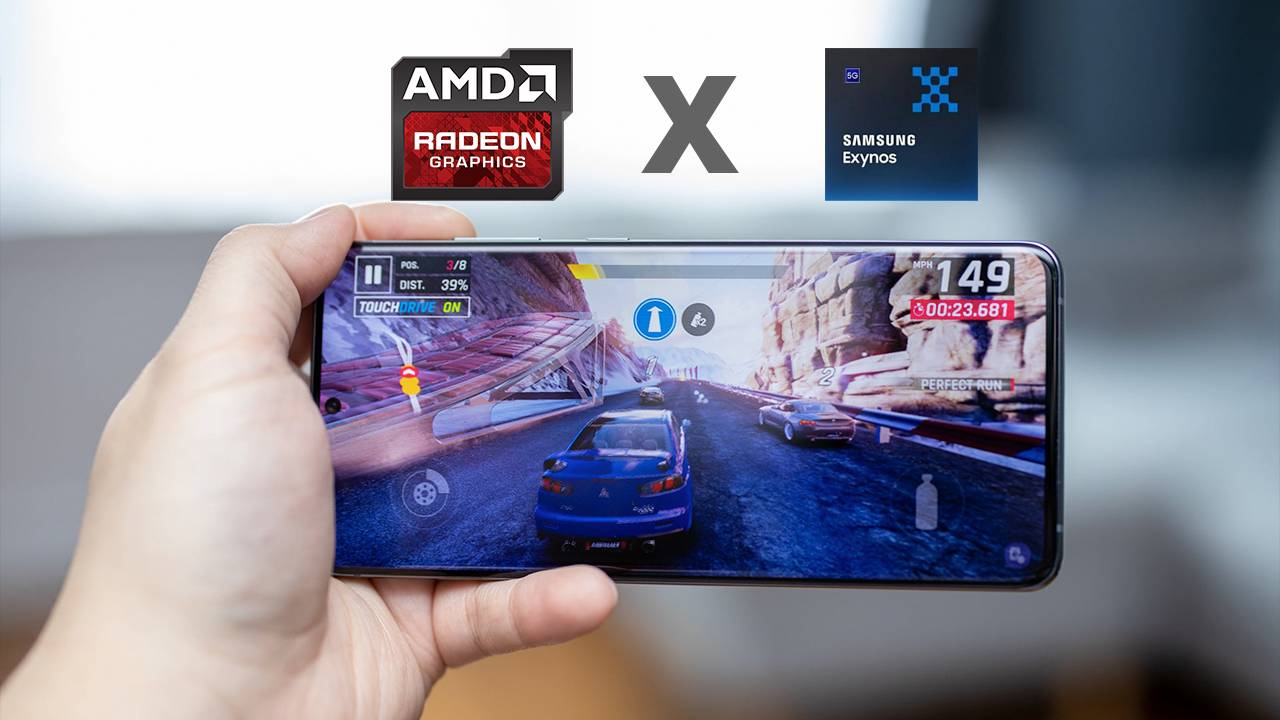It’s been almost a year when Samsung and AMD announced a strategic partnership to produce ultra-low power, high-performance mobile graphics based on AMD Radeon Graphics technology. As part of the partnership, AMD will license custom graphics IP based on the recently announced highly scalable RDNA graphics architecture to Samsung for future smartphones and other products that complement AMD product offerings. The deal means that Samsung will focus on advanced graphics technologies and solutions to enhance innovation in the mobile market with AMD RDNA technology. But after the deal, it’s been almost a year and we haven’t heard much on the future developments of that partnership.
Recently, Samsung’s in-house Exynos Chip is under a lot of fire due to its poor performance compared to equally powered Qualcomm counterparts. The performance gap is more apparent with the latest Galaxy S20 series flagship phones. Although Samsung has been pretty good at hiding this fact from the masses. Anyways, Samsung being in a dire situation with their Exynos chip is looking for a way to make their Exynos chips compete against Qualcomm’s chips.
A new report indicates that the upcoming 5-nanometer Exynos 1000 CPU for next year will feature the new GPU based on AMD’s technology. The chip is currently referred to as RDNA-Exynos as there is no name set or had been announced by Samsung. Although, according to Samsung’s latest earnings call, the company is still 2 years down the road from the launch of the company’s RDNA-based GPU. This indicates the GPU is likely to appear in 2021 with Exynos 1000 chips.

However, a poster on South Korean tech forum Clien, claims that the Radeon Based GPU crushed Qualcomm’s Adreno 650 in a GFXBench test. The GPU scored 181.8 fps on the Manhattan 3.1 test beating the Adreno 650 GPU found on the Snapdragon 865 processor which had a score of 157.7 fps on that test. The unnamed RDNA GPU performed 13% higher than the Adreno GPU. Meanwhile, in another test named AZTECH, Samsung’s AMD GPU had a score of 138.25 fps on Normal and 58 fps on High. Compared to Samsung’s AMD GPU, Qualcomm’s Adreno GPU scored 53.65 fps on Normal and 20.38 fps on High. This translates to roughly 3-times higher performance by Samsung’s AMD GPU on RDNA technology compared to Qualcomm’s Adreno 650 GPU. Which is pretty amazing and the level of power that is unheard of. Qualcomm has been dominating the mobile GPU market for quite a sometime now, especially with their Adreno GPU on their SoCs. Meanwhile, the Mali GPU has been playing second fiddle to Qualcomm’s Adreno GPU for quite some time now. But Samsung’s AMD Radeon GPU is certainly showing a promise of new heights in mobile gaming GPU.
It is being rumored that when optimized the new chip could even outperform Apple’s next-generation A14 class CPU. Although, something we should note that the alleged benchmark scores are only rumors and there is no confirmation of those benchmark’s to be Samsung’s AMD GPU. And since the GPU is still a year away from us, there is no way of confirming this as of yet. However, it is still invigorating to think such height can be achieved in mobile graphics.
There is new speculation that Nintendo could be another biggest customer besides Samsung, of the new combination of Exynos CPU and AMD GPU. Nintendo previously used Nvidia’s Tegra X1 which is now aging. But, since Nvidia could not make any progress in consumer ARM chips, Nintendo is left to search elsewhere for a better and powerful ARM chip. Although the gaming giant hasn’t publicly expressed any intention to have a new Switch, eventually that day will arrive. And thus, the speculation of Nintendo to use Exynos chip with AMD RDNA GPU arose.







